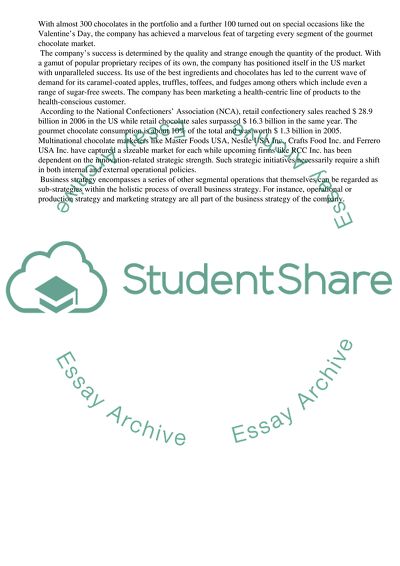Cite this document
(“The Real Chocolate Company Inc Essay Example | Topics and Well Written Essays - 3500 words”, n.d.)
The Real Chocolate Company Inc Essay Example | Topics and Well Written Essays - 3500 words. Retrieved from https://studentshare.org/business/1552149-business-strategy-the-real-chocolate-company-inc-case-study
The Real Chocolate Company Inc Essay Example | Topics and Well Written Essays - 3500 words. Retrieved from https://studentshare.org/business/1552149-business-strategy-the-real-chocolate-company-inc-case-study
(The Real Chocolate Company Inc Essay Example | Topics and Well Written Essays - 3500 Words)
The Real Chocolate Company Inc Essay Example | Topics and Well Written Essays - 3500 Words. https://studentshare.org/business/1552149-business-strategy-the-real-chocolate-company-inc-case-study.
The Real Chocolate Company Inc Essay Example | Topics and Well Written Essays - 3500 Words. https://studentshare.org/business/1552149-business-strategy-the-real-chocolate-company-inc-case-study.
“The Real Chocolate Company Inc Essay Example | Topics and Well Written Essays - 3500 Words”, n.d. https://studentshare.org/business/1552149-business-strategy-the-real-chocolate-company-inc-case-study.


